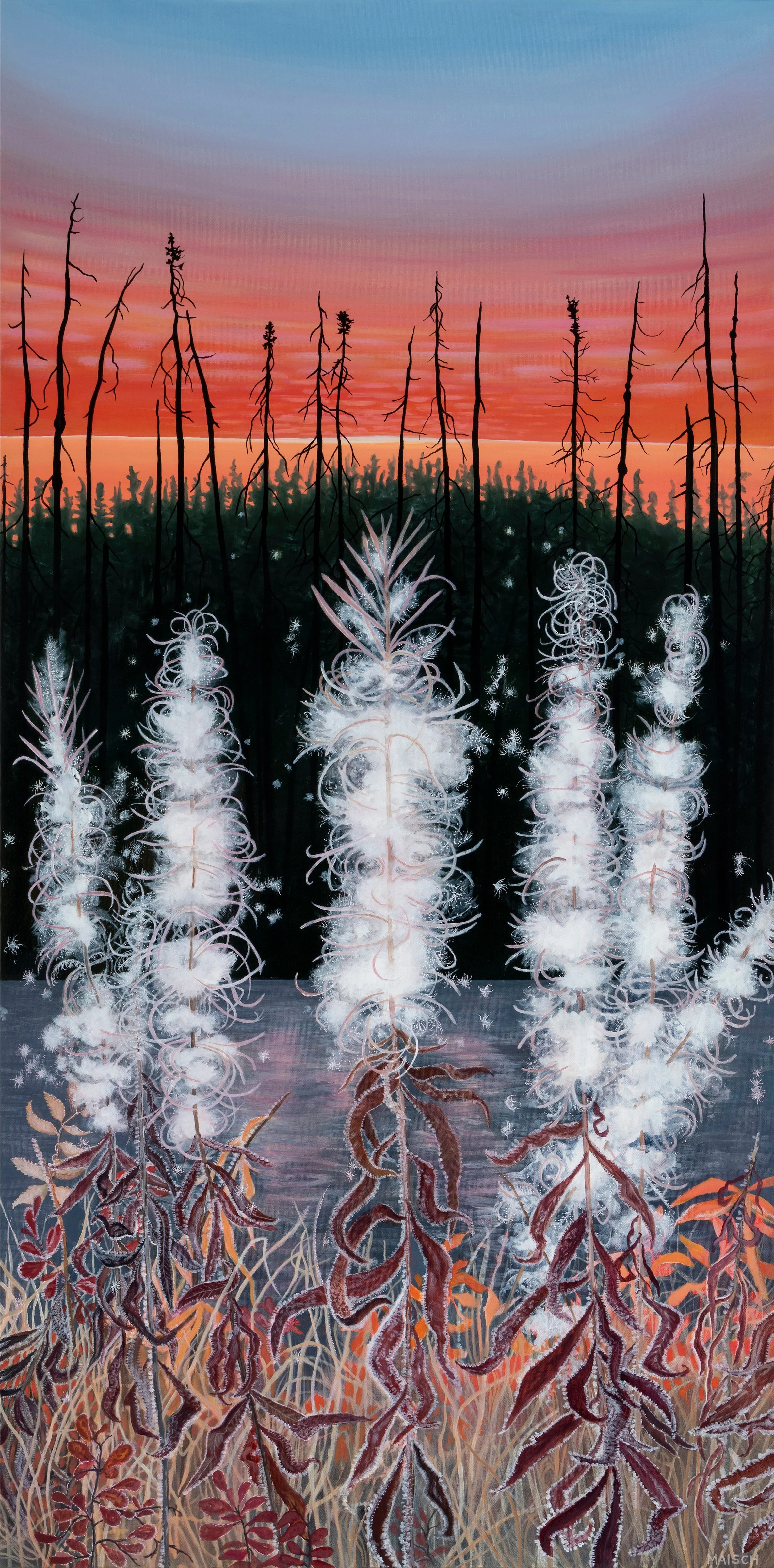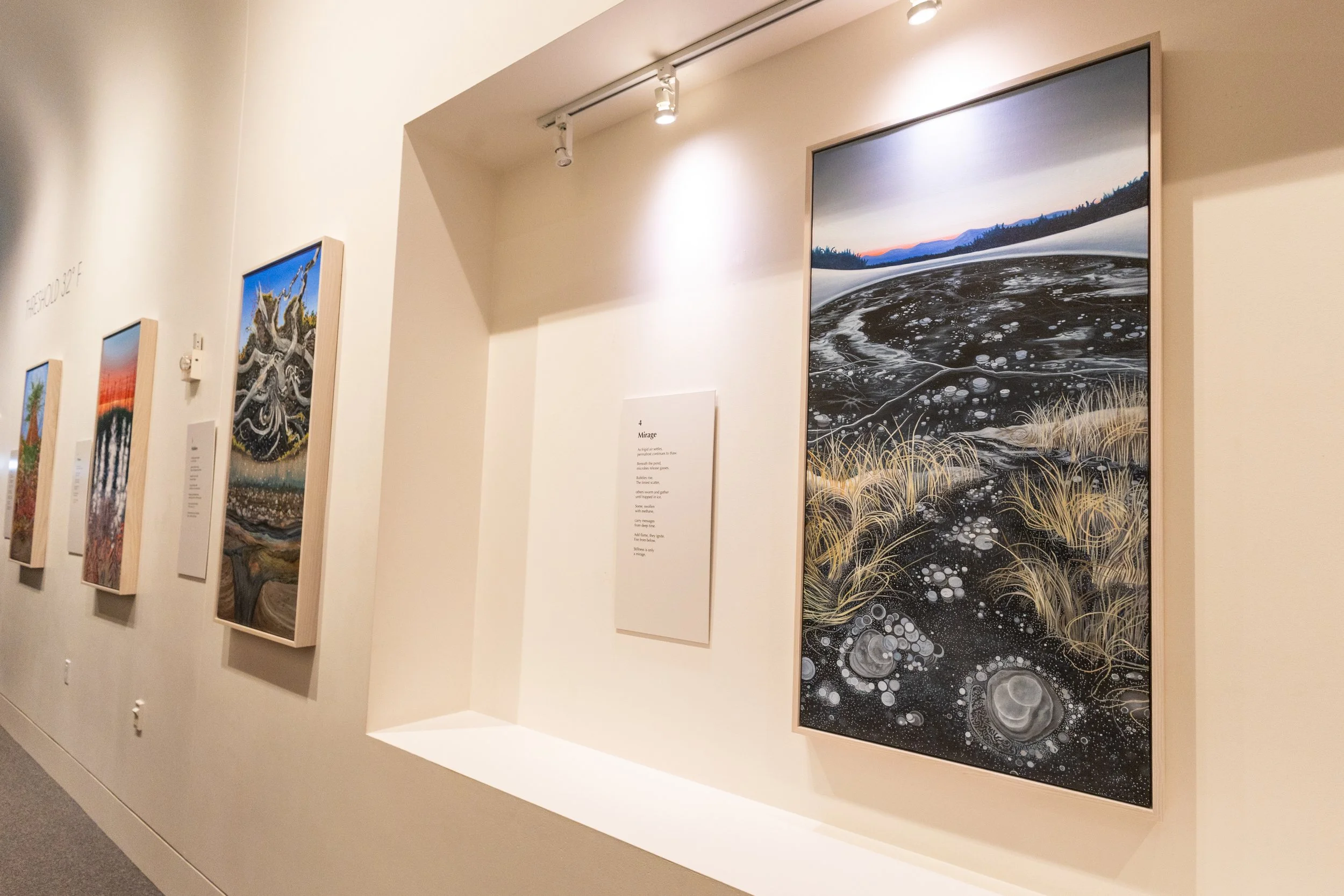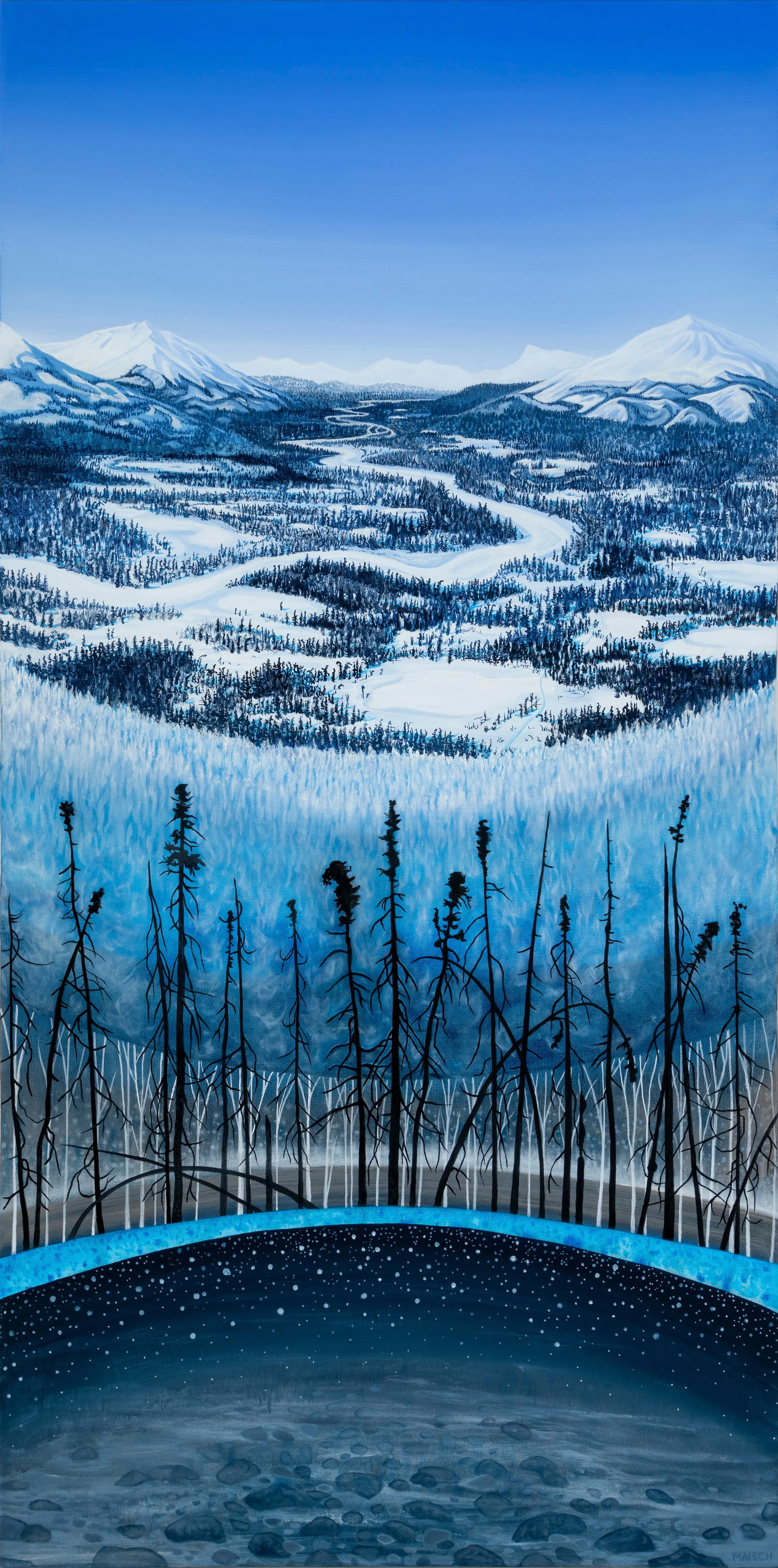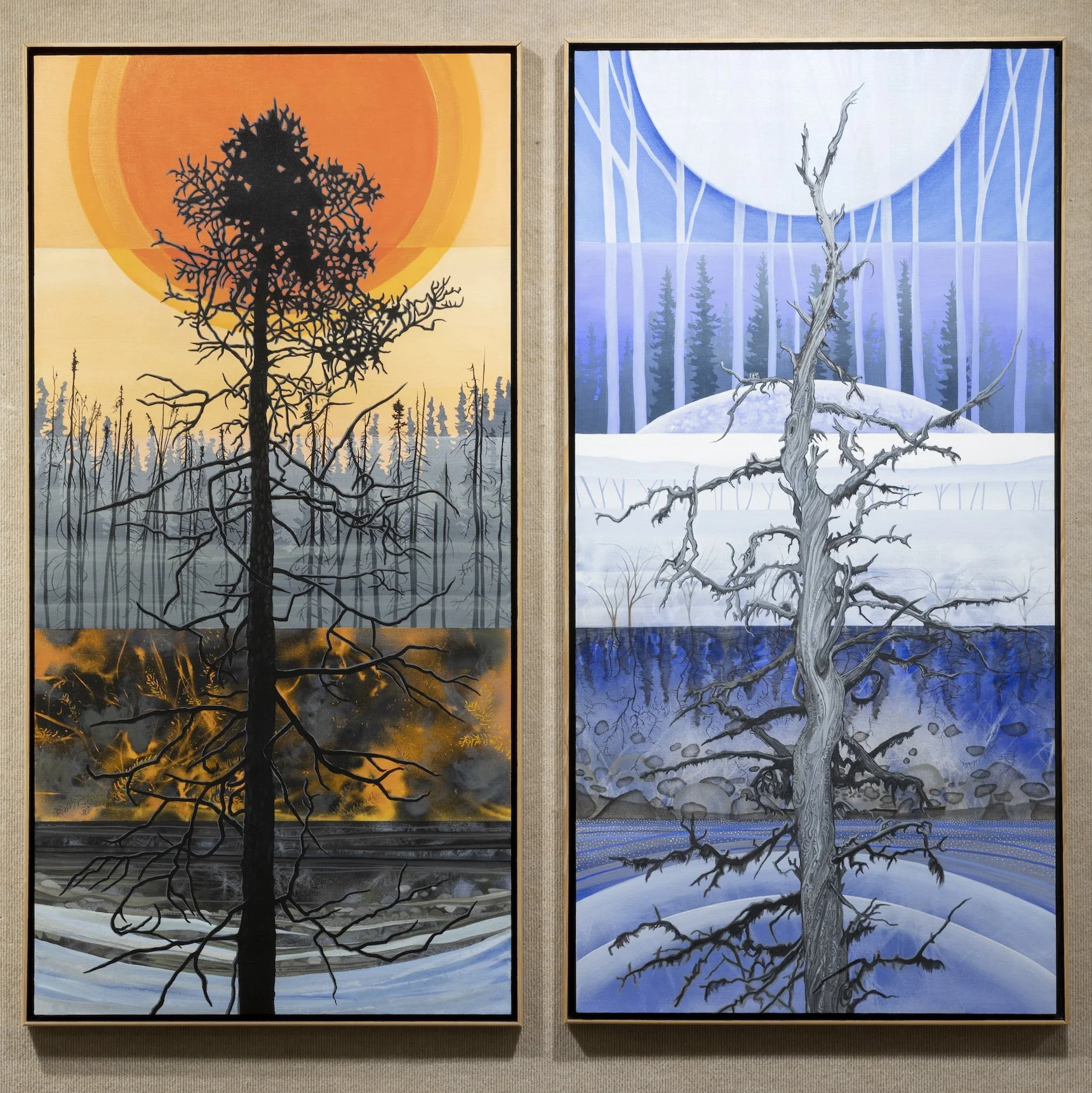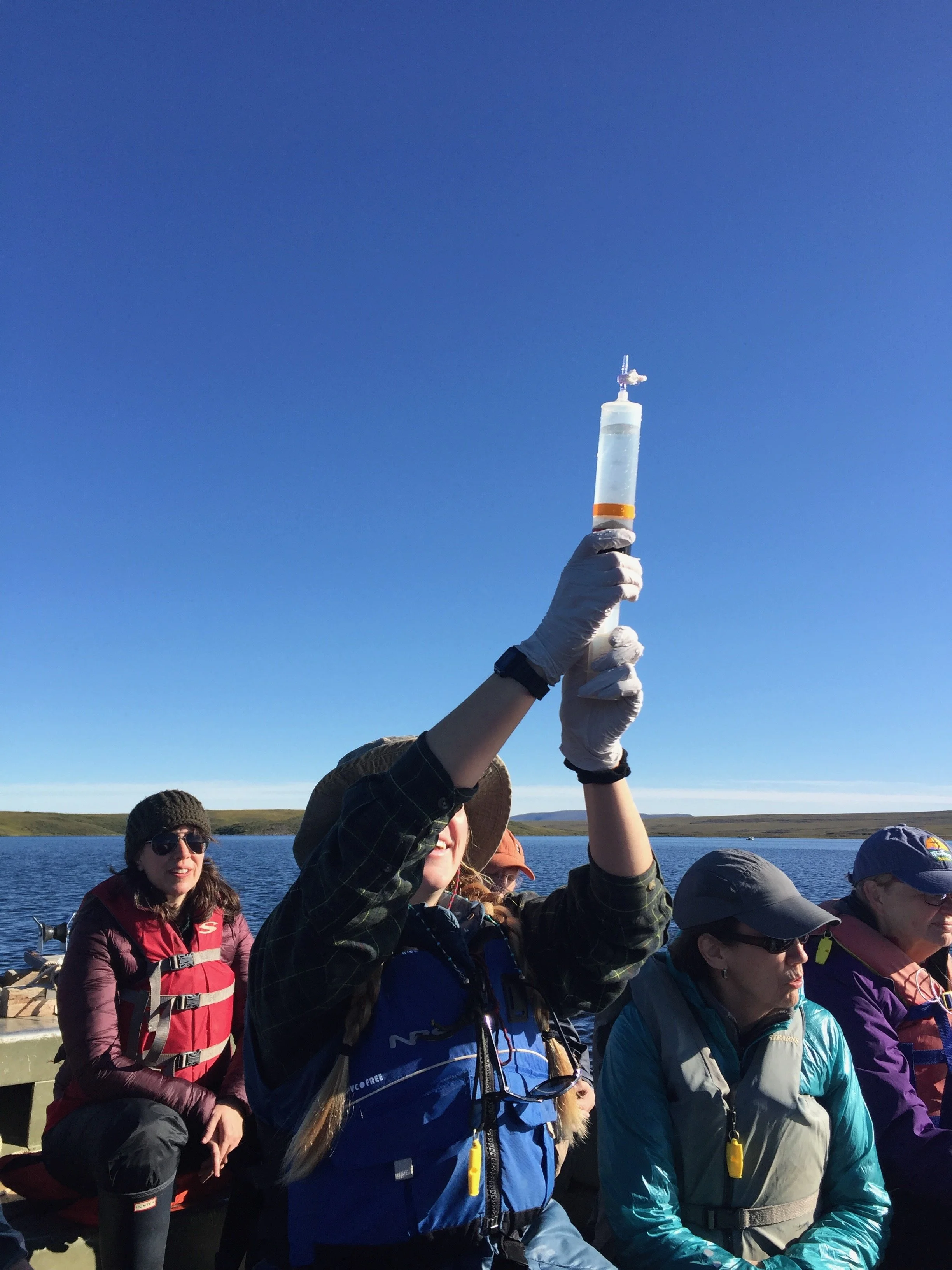Threshold 32°F
A collaborative narrative, by writer Debbie Clarke Moderow, artist Klara Maisch, and ecologist Rebecca E. Hewitt
THE COLLABORATION
Threshold 32°F, by artist Klara Maisch, writer Debbie Clarke Moderow, and ecologist Rebecca Hewitt, is a multidisciplinary narrative about change in the boreal forest. Together, the voices of Maisch, Moderow, and Hewitt take the audience on a journey that unfolds in a sequence of ten paintings, poems, and scientific field notes.
THE INSPIRATION
On a warm September morning, an artist, a writer, and an ecologist wander through the boreal forest. As they move among spruce trees, they look to the forest floor, its weave of berries and mosses, fungi, and lichens, so well-adapted to long dark months of cold. The three friends are winter people. The musky scent of fall lifts their spirits, but signs of warming are clear.
Extended summers and temperature swings above 32°F (0°C) in winter have amplified change in Interior Alaska. The artist pauses to sketch a tree trunk spilling sap from boreholes left by bark beetles. The ecologist touches a branch of browned needles and describes the tree's connection to mushrooms in the understory. The writer scans the forest for signs of young spruce.
In the company of fear unspoken, the three forage on an earthen threshold where science meets story, where recipes for resilience might reside. Where 32°F, the tipping point between ice and water, draws them deeper into a storyline of what is at stake when temperatures rise in a land shaped by cold.
Paintings by Klara Maisch, photos by Chris Arend
Threshold 32°F
View online at terrain.org, or visit Museum of the North, University of Alaska, June-November 2025
See Events for future exhibits
These projects were made possible by In a Time of Change (itoc.alaska.edu) with funding from the National Science Foundation (DEB-2224776 and DEB-1636476) and the USDA Forest Service Pacific Northwest Research Station (RJVA-PNW-20-JV-11261932-018) through the Bonanza Creek Long-Term Ecological Research program (lter.uaf.edu).
PREVIOUS ITOC COLLABORATIONS
Boreal Forest Stories
Words from the In a Time of Change website, Boreal Forest Stories :
Forming an emerald ring around the circumpolar North, the boreal forest is the world’s largest land-based biome. Also known as taiga, it accounts for approximately one third of Earth’s total forest area and covers the majority of Interior Alaska.
“Boreal Forest Stories” is a cross-disciplinary, collaborative project examining change in the boreal forest through narrative. For over a year and a half, 44 creators, including artists, writers, environmental educators, and humanities scholars, exchanged knowledge and perspectives on the boreal forest with scientists and explored narrative as it applies across the disciplines. Through their original works, participants relate stories rooted in the boreal forest, including its ecology, its inhabitants, and their interactions.
Please note: Two Trees and Solace of Circles will be published in Boreal Forest Stories, forthcoming from University of Alaska Press in 2027. Solace of Circles appeared in Permafrost Magazine (Issue 45.2, April 2025
Two Trees, by artist Klara Maisch and writer Debbie Clarke Moderow
They stand with the living, refuse to lie down. One rises from snow and ice, her elegant bones bare. A century has passed since she surrendered to wildfire that flashed through the valley. The other prevails after a recent firestorm. Branches remain despite the heat and sparks, the violence and pressure that took her. She lingers amidst threads of summer smoke.
Trees in the boreal forest seek their own story. Their roots forage in layers of legacies buried under ground. Collaborators with fungi, they descend through damp mosses and peat to layers of humus, reaching for soil of minerals and silt. Fungi take sugar from the tree, then gather and deliver phosphorus and nitrogen in return. Sometimes tangles of roots and mycorrhizae descend to the threshold where ice in permafrost melts. To the thaw front where microbes feast on decayed plant matter from the Ice Age—and emit carbon dioxide, methane, and nitrogen. Gases rise and warm the air. The boreal forest responds.
Change churns, blending one storyline with another. Ice storms toss branches to earth. Summer’s flames open spruce cones whose seeds scatter, settle, and root in burnt soil. Succession of the forest pulses a primordial rhythm of decay and renewal. Pollinators buzz to the melody of a warming wind. Fireweed nods while spruce beetles thrum. Woodsmoke stings eyes. Shoots of young green rise from charred ground.
Solace of Circles, by Klara Maisch and Debbie Clarke Moderow
Solace of Circles is presented on a small scale, a reflection of Debbie and Klara’s intimate and spontaneous first conversation. Solace of Circles is a dialog between an artist and a writer, heightened by the voices of friends Mary Kaye Denkewalter (1953- 2021) and Marybeth Wikander (1990-2020).
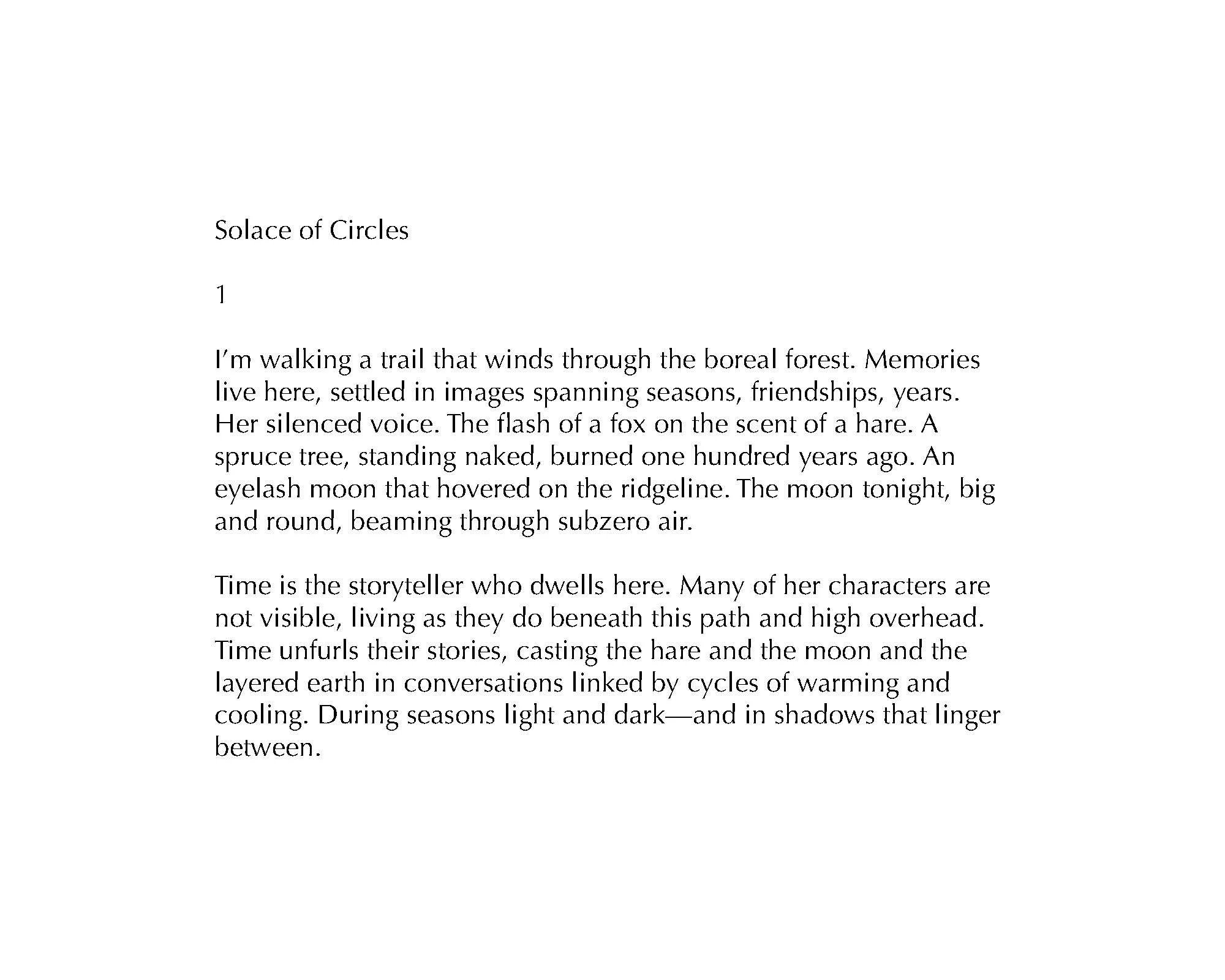
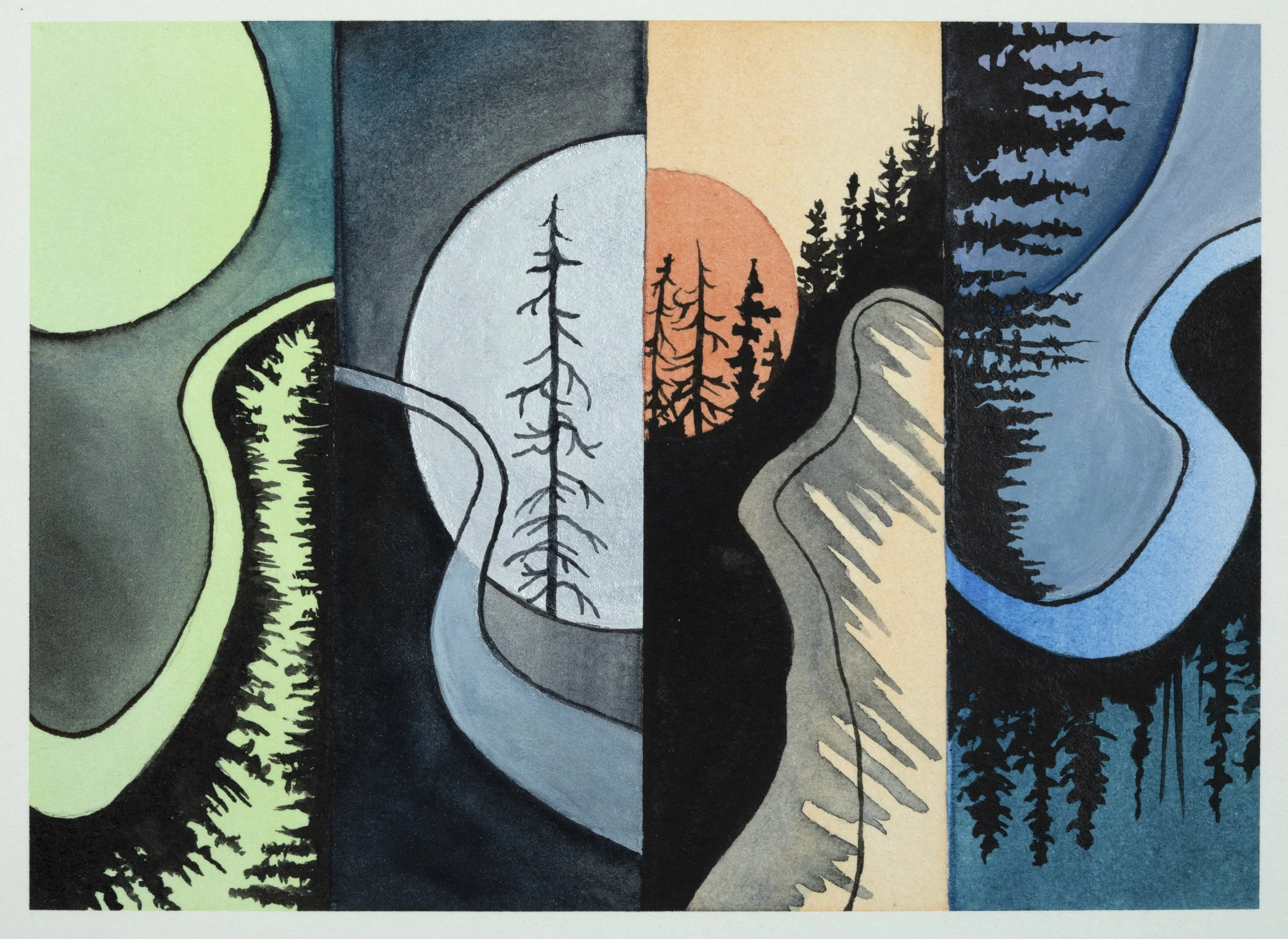
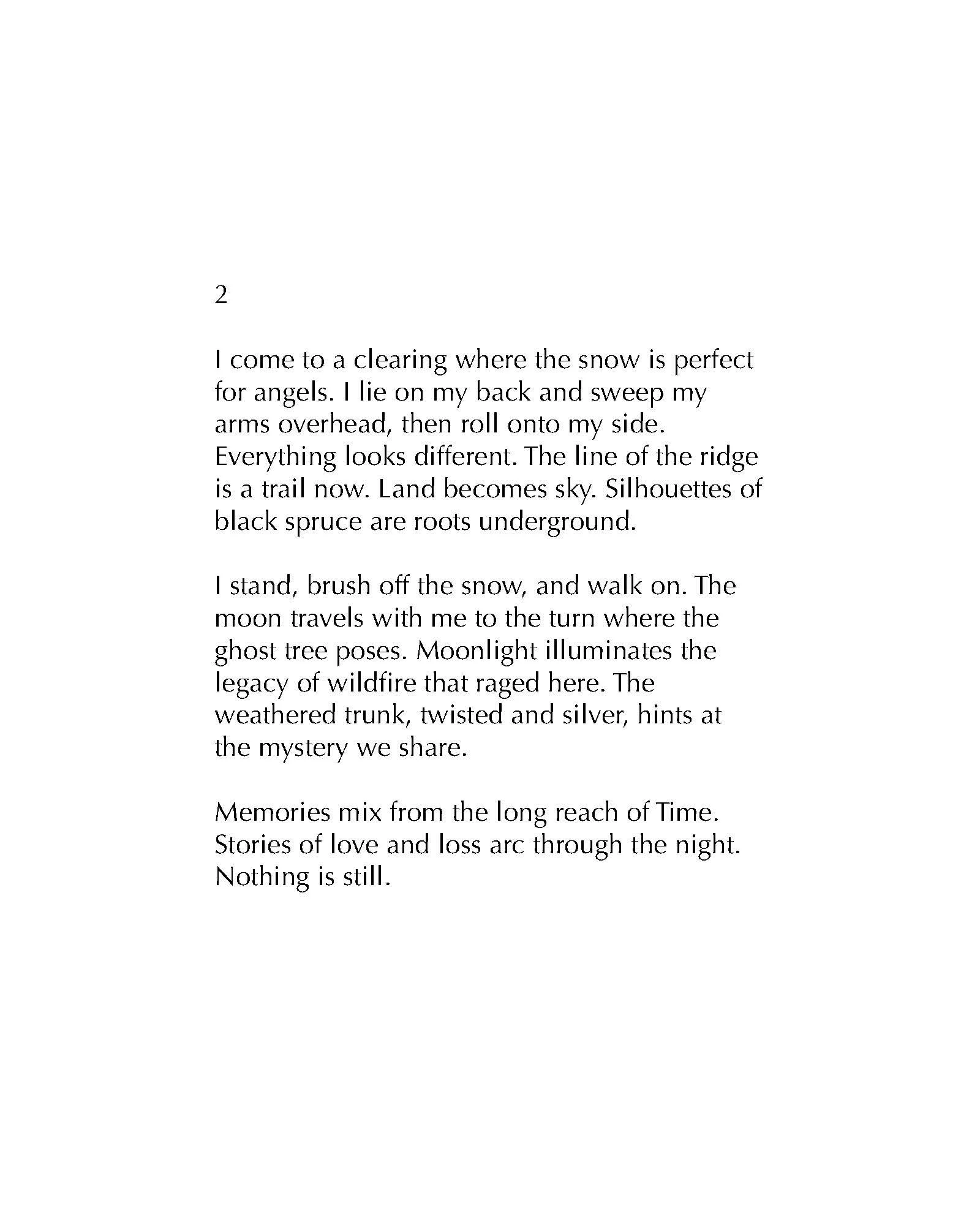
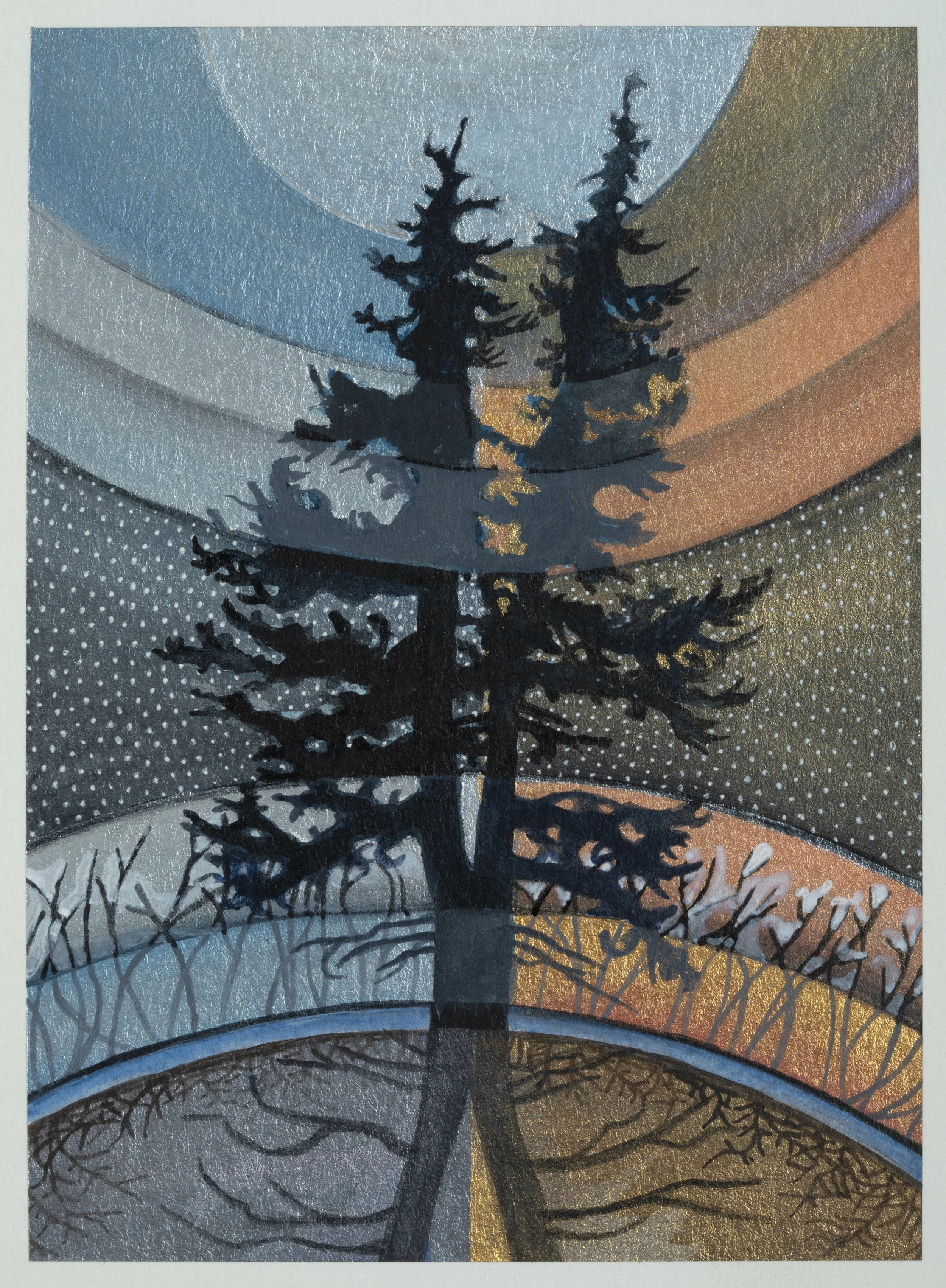
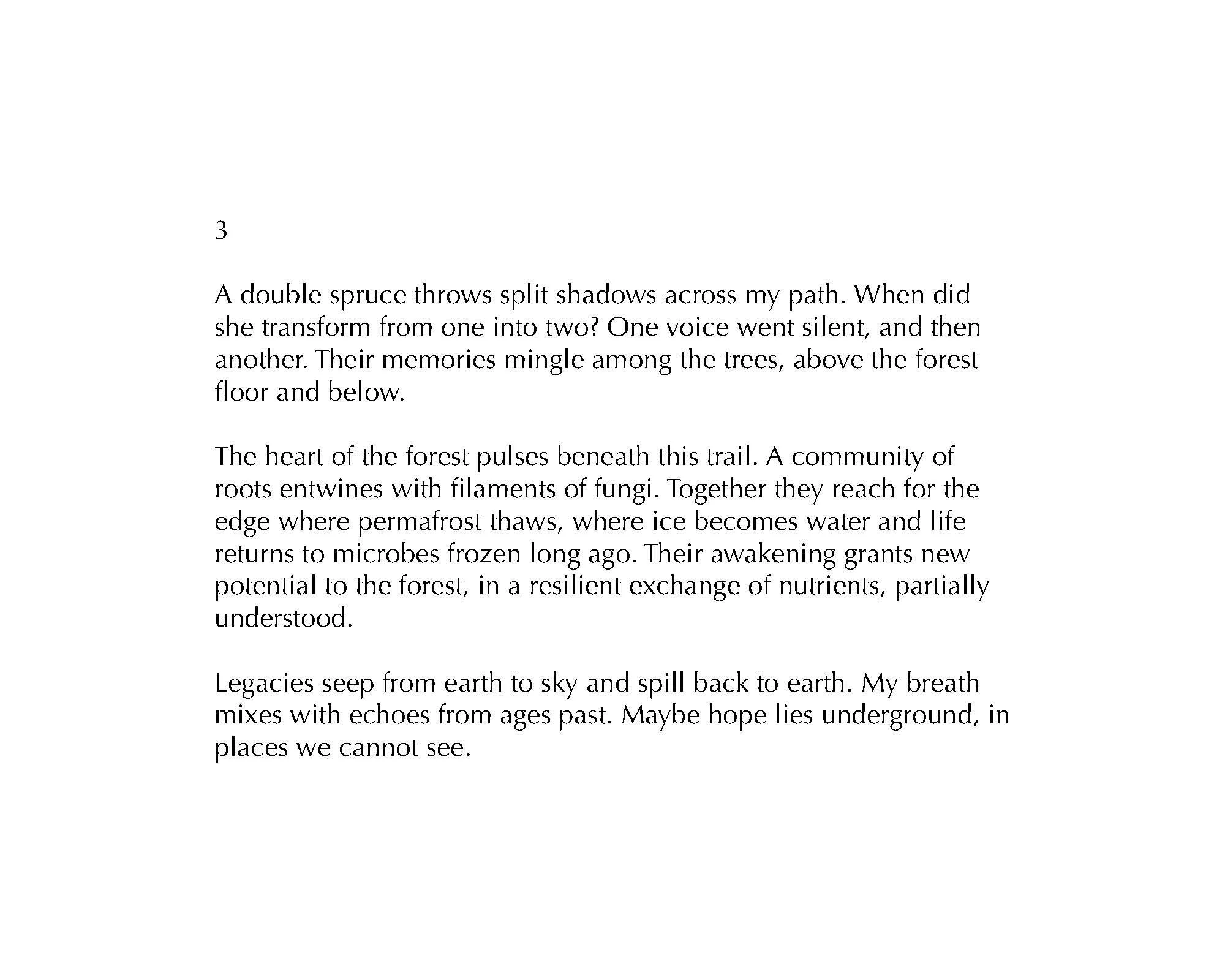
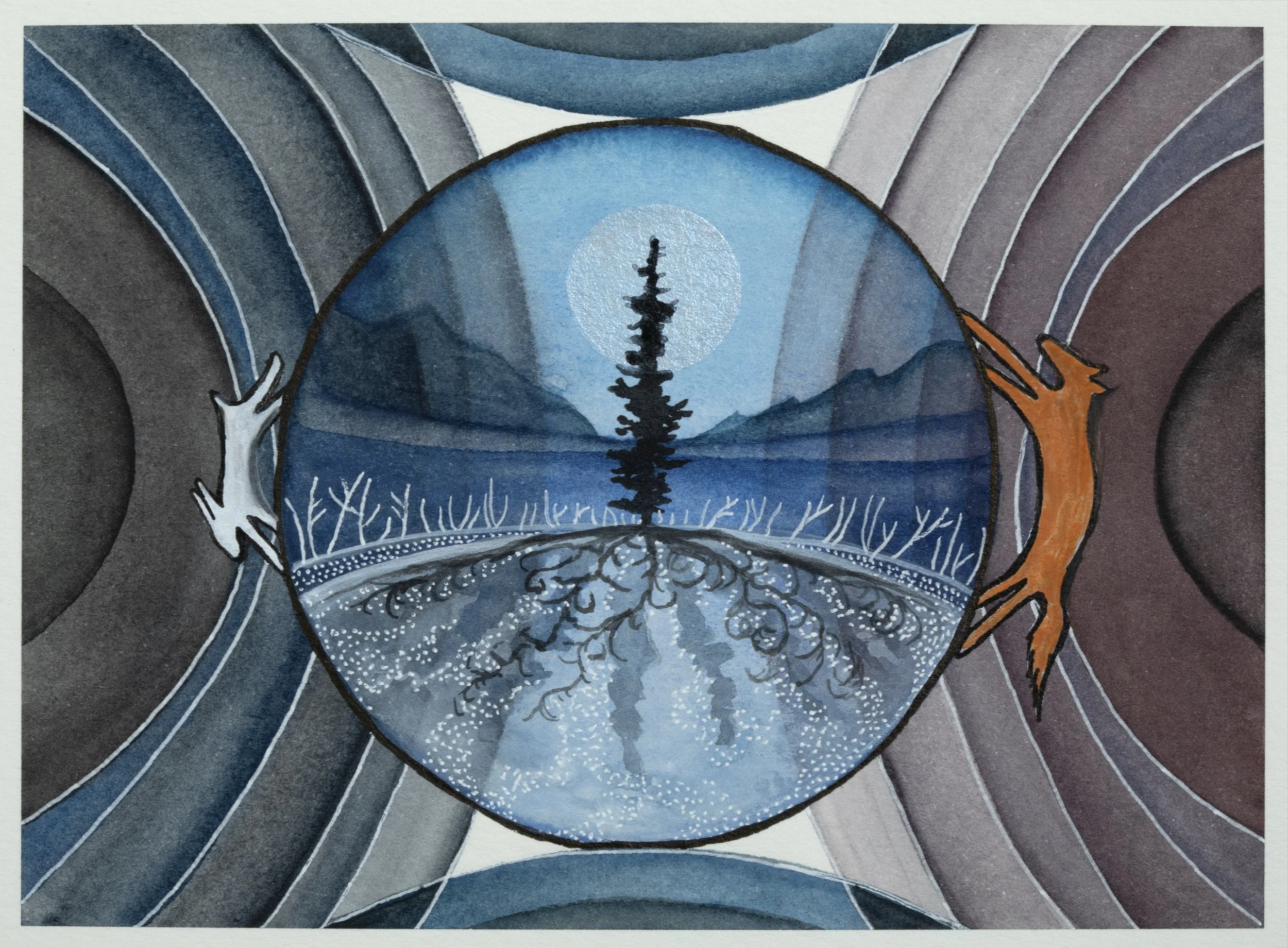
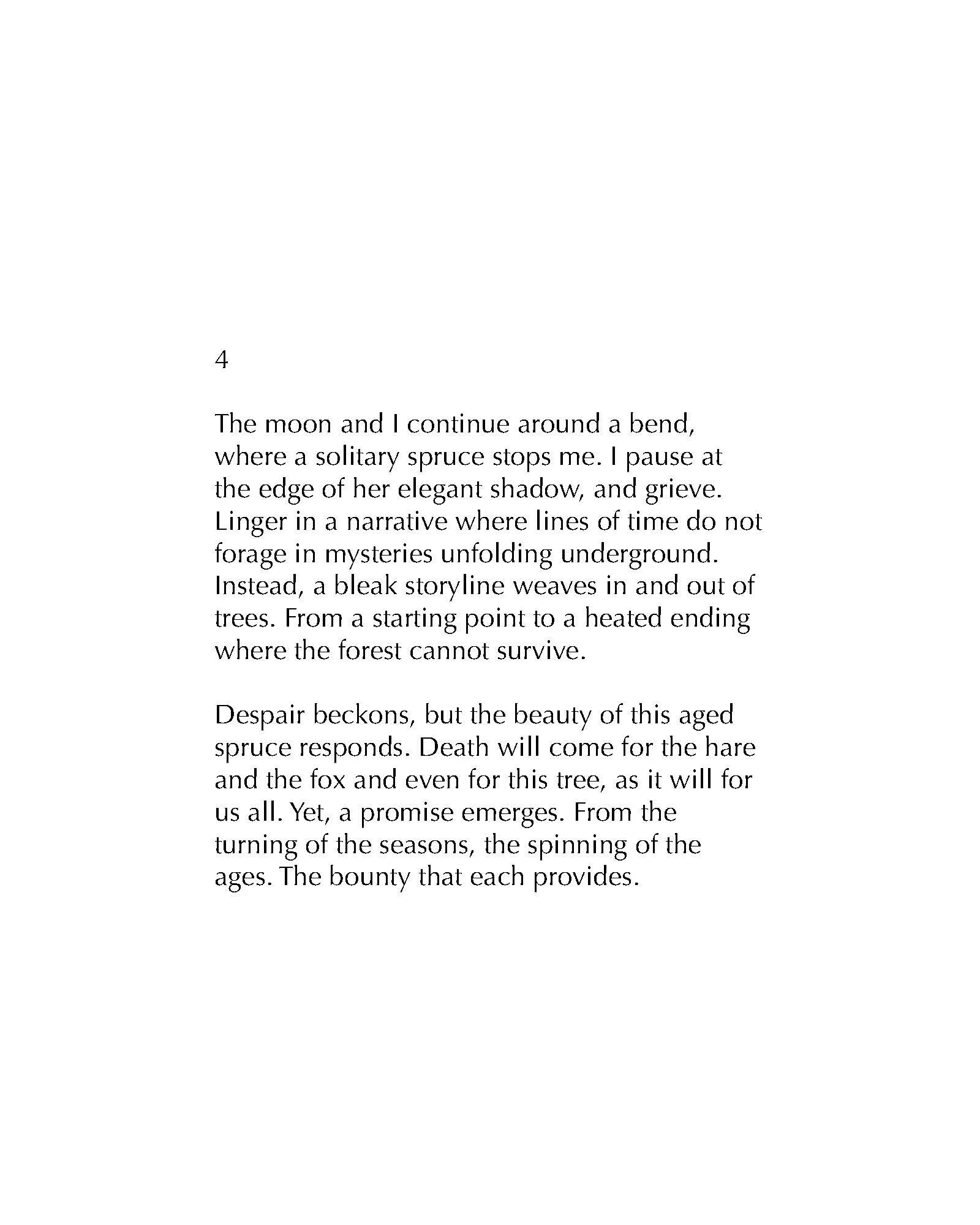
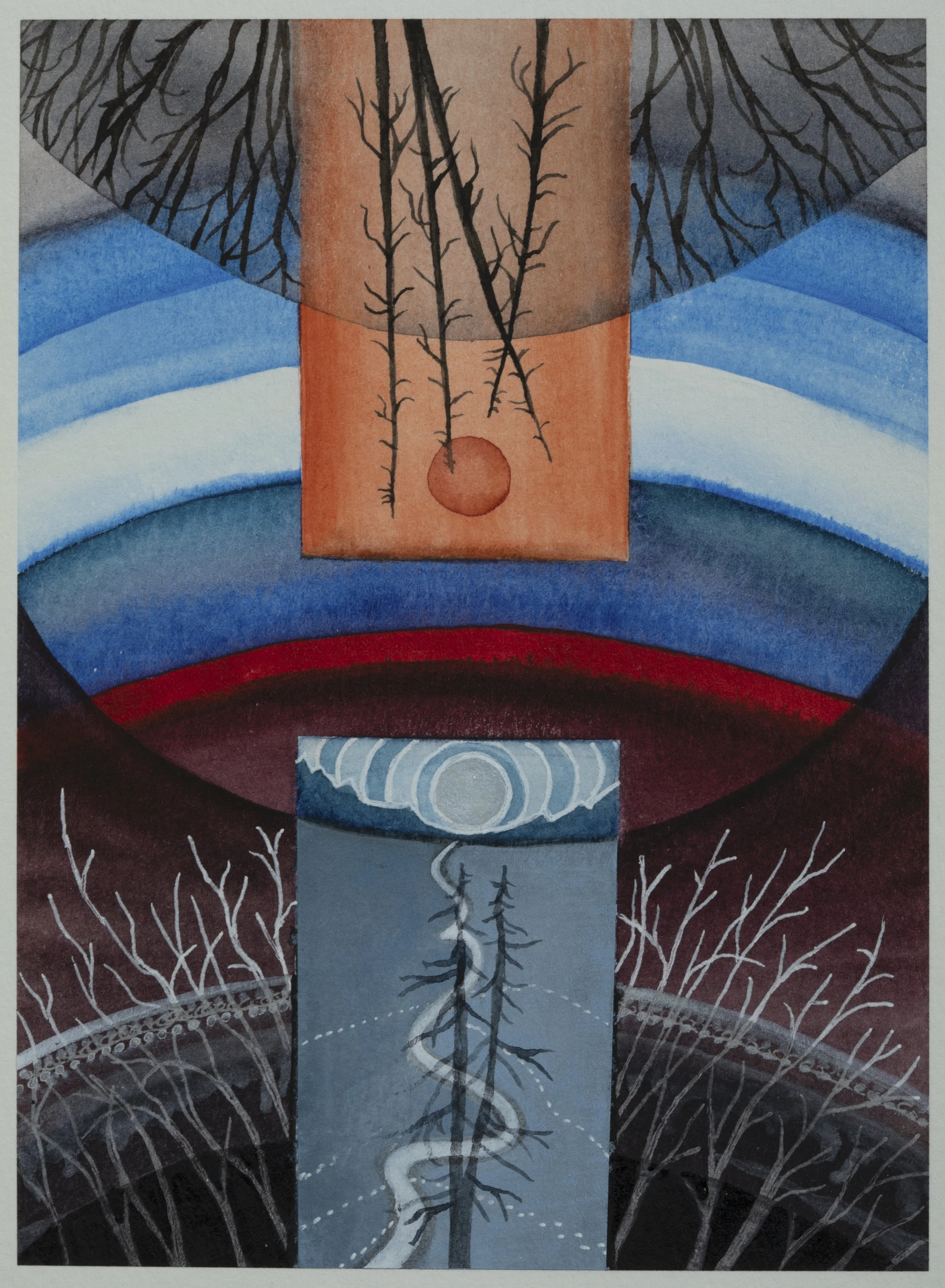
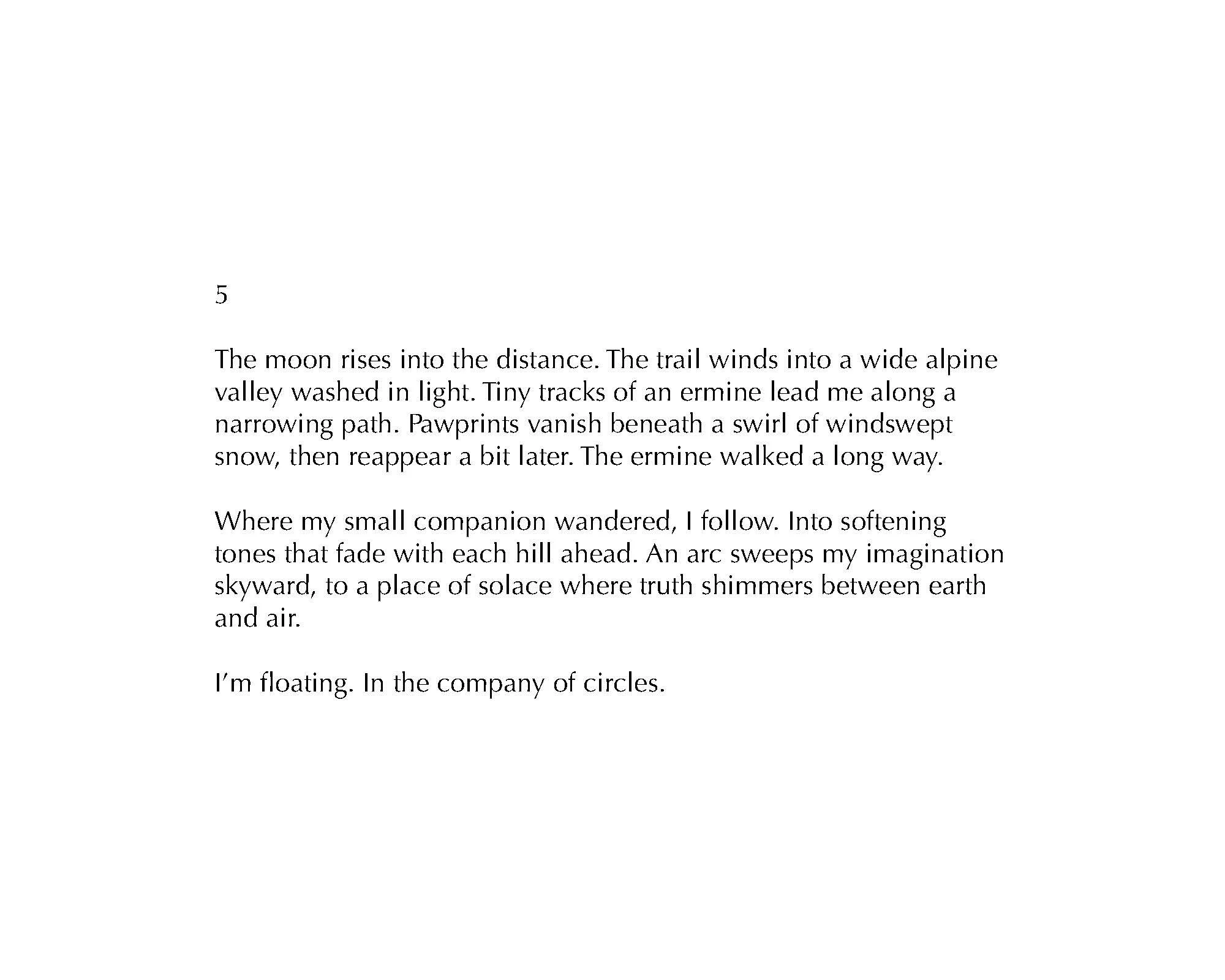
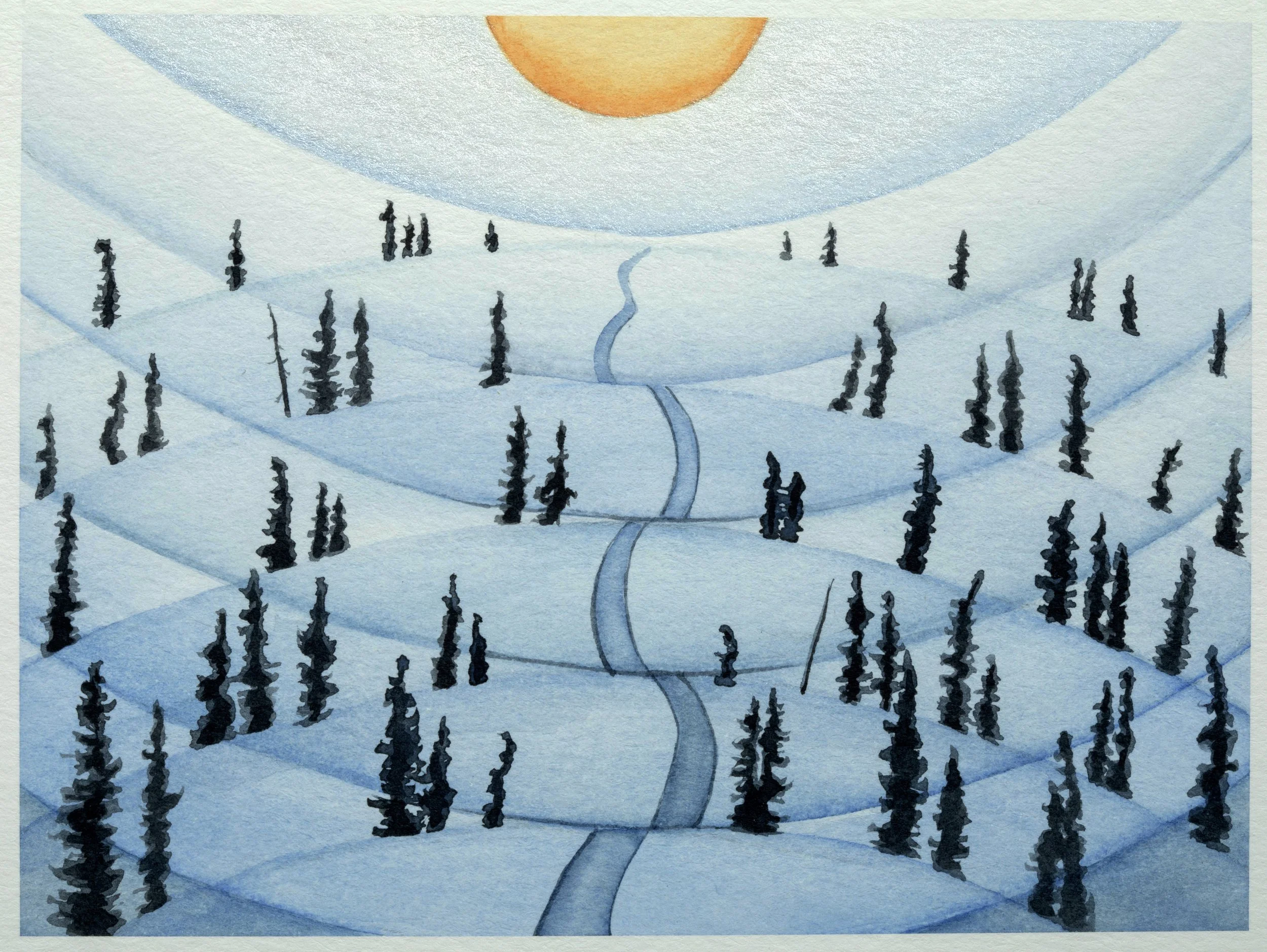
Microbial Worlds 2020-2022
Words from the In a Time of Change website
Microbial Worlds: An Alaska-based arts science humanities collaborative exhibit January 2018
“Peer through the lens of the arts to discover the hidden world of microscopic organisms at In a Time of Change: Microbial Worlds. Fourteen artists and writers magnify the microbiome in this collaborative exhibit sponsored by the arts-humanities-science consortium, In a Time of Change.”
Microbial Worlds is the culmination of 16 months of collaborative work by visual artists, writers, and scientists on the topic of microorganisms. Microbes are the most numerous and diverse organisms on the planet; they include bacteria, fungi, protozoa, algae and viruses. While some cause disease and contribute to climate change, others are responsible for promoting human health, removing toxins from the environment, and maintaining healthy ecosystems.
The Narrow Line: Where Art Meets Science, by Debbie Clarke Moderow

